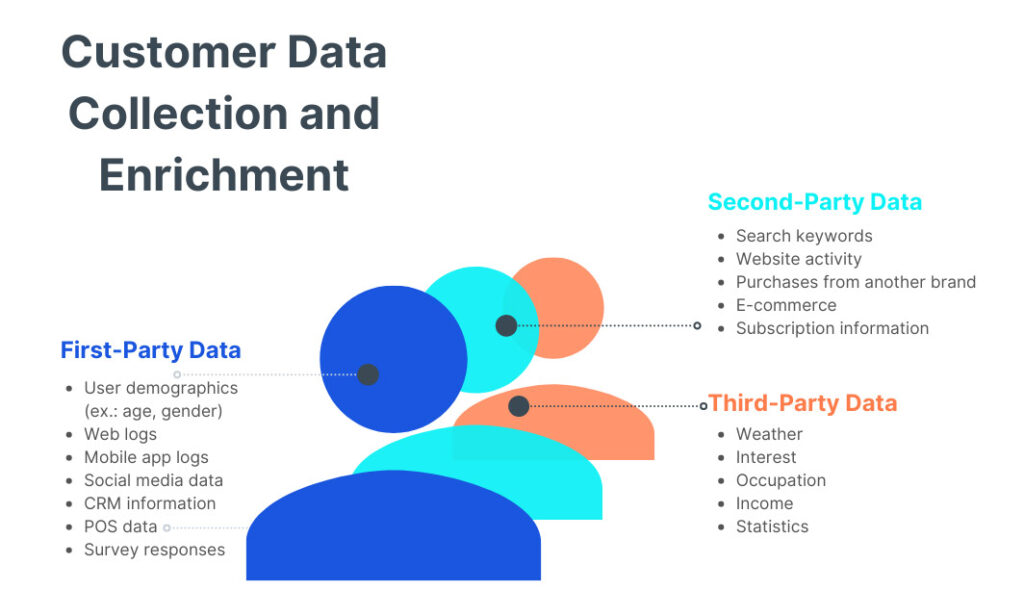Email Marketing always aims to attract customers, provide them with necessary information, encourage them to leave information as a data source for the business, and build and nurture customer interest in the brand. Businesses can apply the following 5 methods to collect customer information as data to build effective Email Marketing campaigns.

1. Provide exclusive data to attract potential customers

Every day, billions of emails are sent worldwide. So how do you collect email addresses when people are overwhelmed with emails? By offering something unique and original. Conduct your own research and provide the results to your audience.
In addition to helping you collect potential customers, exclusive research can attract backlinks, supporting your content marketing and SEO efforts.
2. Offer useful templates and guides in exchange for email information
People don’t want to provide information to receive another email. Most of us are overwhelmed with the amount of inbox every day.
Instead, provide access to an exclusive template or navigational page to make it easier for the email recipients.
3. Use live chat or chatbots to collect emails (and qualify potential customers)
Live chat and chatbots are not just for answering questions. They can also be used to generate and nurture leads.
Use a chatbot or live chat to ask people what kind of information they are looking for so you can segment them into the appropriate channel.
Use this information to answer their questions or direct them to the appropriate resources. Then, ask for their email address. You will collect more email addresses, segment lists, and improve customer service all in one step.
4. Create a free tool (or free version of your platform)
The average office worker receives over 120 emails each day. It’s tough for them to keep up with it all!
This is why collecting email addresses is becoming increasingly difficult—even if you’re providing something valuable like a report or data.
Another strategy is to offer a free tool or a free version of your platform in exchange for an email address.
In addition to asking for an email address, you can also request other information like their job title, to segment sign-ups based on industry or location.
5. Use pop-up windows to attract email subscribers

Having a form to collect newsletter sign-ups on your website is a good opportunity.
Another way to attract subscribers is through a triggered pop-up window. For example, you could set up the pop-up after they read two blog posts or spend three minutes on your website.
Using behavior-based triggers means you’re collecting email addresses from users with higher purchase intent—making your email marketing even more effective.
6. Host (or sponsor) webinars
Webinars are an ideal strategy for collecting email addresses from qualified potential customers. Convincing someone to register for a webinar is easier than convincing all visitors to your website to sign up.
They’re willing to attend the webinar because they have a problem they want to solve. If we can help them solve that problem, they’re more likely to listen and trust you later on.
According to a study, 99% of marketers say that webinars are key to their plans, with 72% saying webinars have a direct impact on their processes and revenue. Because webinars not only provide you with email addresses. You will also gain insights into your audience, such as viewing times and common questions your audience asks.
7. Publishing blog content with copyright and email registration request at the bottom
Copyrighted blog content can help you collect email addresses from customers who are highly likely to make a purchase, especially if you post a request at the end of the article.
If they see the form, it is likely they have read your entire post and are interacting with your brand. Most blog platforms like WordPress make it easy to add a simple opt-in form at the bottom of the page using plugins. Some plugins also provide access to insights, data, and additional tracking options.
8. Use contests or giveaways
Instead of offering free gift baskets or movie tickets, think about what your customers really want or need.
II. What to keep in mind when collecting and managing customer data?

Here are some important notes shop owners should know when collecting and managing customer data:
1. Forcing customers to provide email, causing annoyance
One of the biggest mistakes is forcing customers to provide their email by hiding options or making them feel obligated. For example:
Requesting new email registration to allow access to basic content.
No “Close” or “Skip” button on the email collection pop-up.
Navigating customers to a page they cannot exit without entering their email.
These methods of collecting customer emails may help gather emails quickly but negatively impact the user experience. They may feel annoyed, leave the website, and even never return. Instead, businesses should create incentives for customers to voluntarily sign up by providing real value like free resources, offers, or exclusive content.
2. No post-email collection strategy
Collecting emails is just the first step; what is more important is what to do with that email list. A common mistake is not having a nurturing strategy after customers sign up, leading to:
Emails being forgotten, with no contact for a long time.
Inconsistent emailing, at times too much, at times too little.
No welcome email sequence to make a first impression with customers.
Customers sign up for emails because they are interested in the brand or content the business offers. Without an engagement plan, they may quickly forget about you. Therefore, right after collecting emails, send a welcome email, along with some valuable content to maintain the connection.
3. Poor quality email list, many fake emails
Not all collected emails are valuable. A poor quality email list may contain:
Fake emails due to customers making mistakes or intentionally filling them out.
Inactive or long-abandoned emails.
Irrelevant emails not belonging to the target customer demographic.
If email lists are not regularly filtered, businesses will encounter issues such as:
– Low open rates impacting the effectiveness of email marketing campaigns.
– Emails being marked as spam, reducing the domain’s credibility.
– High costs, as many email marketing platforms charge based on the number of emails in the list.
To avoid this mistake, use email validation tools before sending and periodically remove inactive emails to ensure the list remains clean and of high quality.
In conclusion
Collecting customer emails is an important step in marketing strategy, but if not done correctly, businesses may face negative consequences. With CloudMAIL from the CloudGO ecosystem, you can automate this process, effectively manage customer care, and always maintain a clean email list, thereby achieving optimal results. Contact us now to experience the completely free solution.







